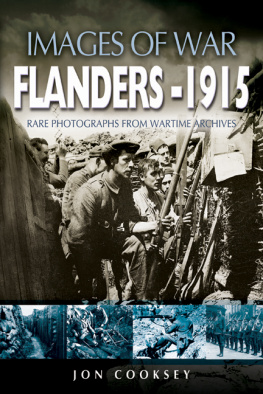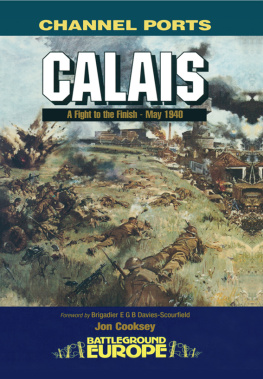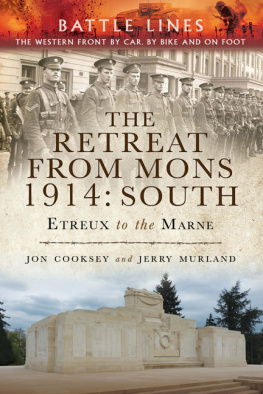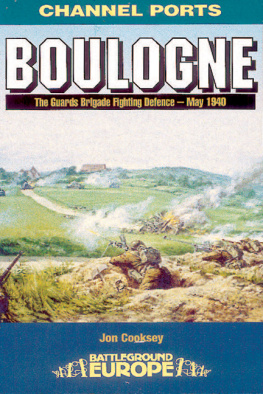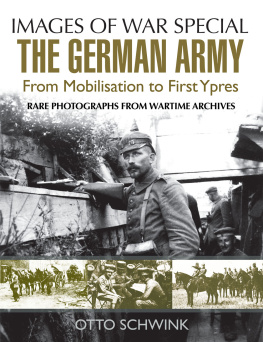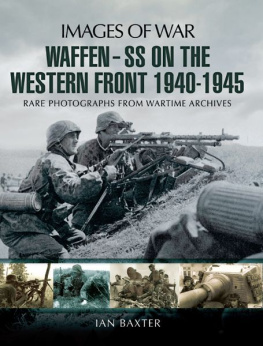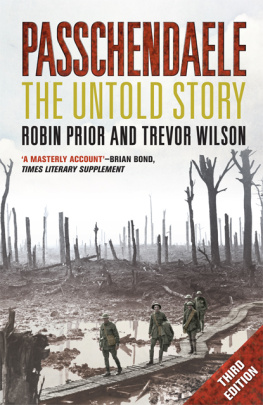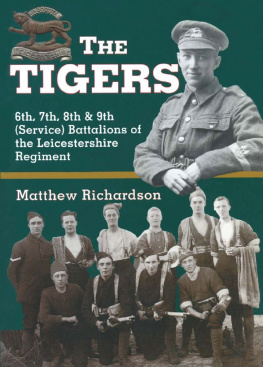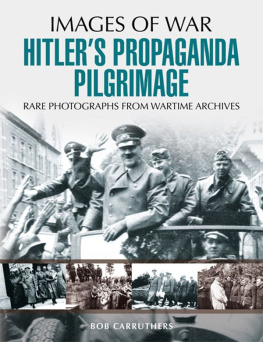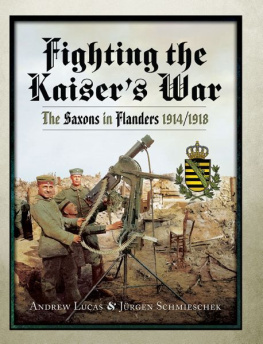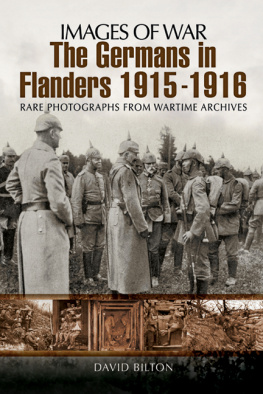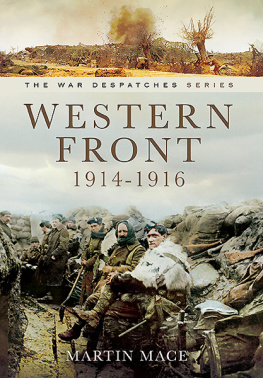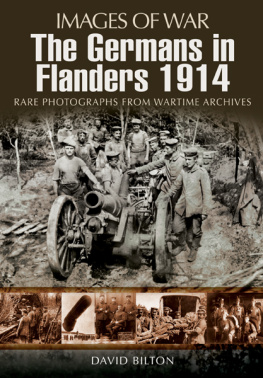

First published in Great Britain in 2005 by
PEN & SWORD MILITARY
an imprint of
Pen & Sword Books Ltd,
47 Church Street, Barnsley,
South Yorkshire.
S70 2AS
Copyright Jon Cooksey, 2005
ISBN 1-84415-356-8
eISBN 9781783038466
The right of Jon Cooksey to be identified as Author of this Work has been asserted by him in accordance with the Copyright, Designs and Patents Act 1988.
A CIP catalogue record for this book is available from the
British Library
All rights reserved. No part of this book may be reproduced or transmitted in any form or by any means, electronic or mechanical including photocopying, recording or by any information storage and retrieval system, without permission from the Publisher in writing.
Printed and bound in Great Britain by CPI UK
Pen & Sword Books Ltd incorporates the imprints of
Pen & Sword Aviation, Pen & Sword Maritime, Pen & Sword
Military,
Wharncliffe Local History, Pen & Sword Select,
Pen & Sword Military Classics and Leo Cooper.
For a complete list of Pen & Sword titles please contact:
PEN & SWORD BOOKS LIMITED
47 Church Street, Barnsley, South Yorkshire, S70 2AS, England.
E-mail: enquiries@pen-and-sword.co.uk
Website: www.pen-and-sword.co.uk
Acknowledgements
It has taken an extraordinarily long time for this book to come to fruition. It is almost twenty years since I first set eyes on one or two remarkably evocative images of the 1/5 York and Lancaster Regiment during research for my book on the Barnsley Pals Battalions of the First World War and there were hints then that an extensive collection of rare images taken by a junior officer named Harry Colver during the Great War existed. Sir Nicholas Hewitt, owner of the Barnsley Chronicle newspaper, whose grandfather, Sir Joseph Hewitt, a South Yorkshire land and colliery owner, had served as the first commanding officer of the first Barnsley Pals Battalion, rescued a family album from a bonfire. In it were images of the 1/5th Battalion, Territorials, compiled by Sir Josephs son, George who had been one of Harry Colvers friends and brother officers. But George Hewitt had not been the photographer. Another album turned up, featuring copies of the same images, then another the Hess album was deposited in the York and Lancaster Regimental Museum in Rotherham and revealed a few more before the Colver album emerged and it became clear that Harry Colver had been the driving force behind the images. A book was decided upon but other work intervened and the Colver project was set aside. It was not until the Images of War series was conceived by Pen and Sword Books that I felt a suitable vehicle had at last been found to bring the Colver images to life, nevertheless I owe a great debt of gratitude to several people without whom the book would never have been completed.
In the early days Roni Wilkinson initially at the Barnsley Chronicle, latterly of Pen and Sword Books expended an enormous amount of time and painstaking effort tracking down and then cataloguing many of the images as well as interviewing several veterans of the 1/5 York and Lancasters and their families. In designing this book a task which he performs with the utmost skill and sensitivity for the subject matter Roni claimed it was just like meeting old friends and so it was. It has been such a pleasure to work closely with Roni again after such a long time.
I should also like to thank Peter Taylor, whose knowledge of the 1/5 Battalion was of tremendous help in the early days, as was the regimental knowledge of Stewart Eastwood and Don Scott, two past curators of the York and Lancaster Regimental Museum in Rotherham. I should like to record my grateful thanks to them for their unfailing courtesy and willingness to assist, all those years ago. The present curator, Karl Noble, has also been a source of help and encouragement as was Jane Davis, whose own project, cataloguing photographs for the regimental museum, also resulted in a book. I thank Karl particularly for his enthusiasm and willingness to set aside time for me to visit the museums archives during a busy period for him and the museum, to whose Trustees I also extend my sincere thanks.
Sir Nicholas Hewitt and his son Charles, Chief Executive of Pen and Sword Books, have once again been very supportive of the project and I should also like to express my thanks to the families of the late Mr Robert Colver of Sheffield and that of his younger namesake, Mr Robert Colver, also of Sheffield, who responded to my several queries over the telephone with great patience.
Once again, my wife Heather and my daughter Georgia have been the epitome of support and understanding during the writing of the book. They truly deserve my thanks.
Every effort has been made to seek permissions where necessary but if, inadvertently, these have been overlooked I should be pleased to hear from copyright holders.
It only remains for me to say that if any errors or omissions reside in the book then they are entirely due to oversights on my part.
Jon Cooksey . Reading 2005
Introduction
IT COULD BE ARGUED that the images you are about to see on the following pages constitute a family photograph album. It is true that many of these rare and highly evocative images, the great majority of which have never before been published, deal with war rather than the more usual family snaps of birthdays, weddings and holidays by the sea, but it is a family album nevertheless. The family, in this case, was an infantry battalion of the part-time Territorial Force the 5th, later renumbered the 1/5 Battalion, of the York and Lancaster Regiment. More specifically perhaps, the family consisted of the officers of that Territorial battalion, for in reading aloud the names of the officers, one could hear reflected the names of many of the most influential middle and upper middle class families of South Yorkshire. Here were the sons of the professional, business and landowning classes; the sons of Sirs and solicitors, of Aldermen and JPs, families who lived not in houses but halls; families with wealth, with power and with influence. Many of these young men had been through the English public school system, a system which had inculcated an ethos of Muscular Christianity and the development of the virtues of duty, honour, sacrifice and service to King and Country. These young men were expected to become leaders and for those who did not join the Regular Army, service in the Territorial Force for home defence was the next best thing. There was perhaps never any question that they would not sign the Imperial Service Obligation, if war were ever declared, as indeed it was on 4th August 1914.
In any family album you will see a range of family snaps the paternal father figure of the old man in command, gathering his young charges about him group snaps of senior family members, group snaps of junior family members, pairs of best friends, images with seriousness and humour; of landscapes, horseplay, trophies and tragedies. It is all recorded in this military family album and it was recorded in the main by one man, a young junior officer called Henry Colver from Ranmoor in Sheffield, better known to the men in his army family as Harry.
It becomes apparent as one moves through the series of photographs he recorded for posterity, that Harry Colver had a passion for what was after all, a relatively new medium for the masses. Photographs of war were not new the first ever war photograph depicted a scene from the American Mexican War which began in 1846 and the photographs of Roger Fenton of the Crimean War and those taken by Mathew Bradys team during the American Civil War, broadcast the gruesome realities of conflict to a wider audience. But the technology Colver was using was relatively new. Fenton and Brady had both used wet plate technology with large, cumbersome cameras needing long exposure times but by the end of the first decade of the twentieth century many people, including Harry Colver, were amongst those in the first rank of the amateur photographers. These people had been bitten by the photography bug and had invested in much smaller, portable cameras using celluloid film, some of which could be slipped easily into a pack or tunic pocket as a means of recording their lives and the lives of those around them in real time. It was Harry Colver who took his camera with him wherever he and his battalion went and it was Harry Colver who could be relied upon to take his camera from his pocket or pack and record the events of the day, no matter how busy or otherwise the battalion may appear to have been. It was also Harry Colver who, at times would come out from behind the camera to ensure his deeds were also recorded. There is also evidence in the following pages that Colver was not simply interested in pointing and pressing. Several images demonstrate that he was actively thinking of composition in his framing of some of the photographs and at times he was not averse to organising men into various tableaux a skill at which some of the earlier, professional war photographers had been very adept.
Next page
